Basic Puppy Training – Tips, Tricks and Techniques
May 13, 2019 2020-07-08 6:37Ready to hit the ground running with puppy training?
Having a puppy join your family is one of the most exciting moments of dog ownership.
Watching a young dog explore the world, learn many new things every day and become your best friend is a rewarding and wonderful experience. There are many firsts along the way:
The first walk, the first swim, the first time playing fetch, the first night spent without a potty break, the first time the dog catches a frisbee, the first time you take him to your favorite restaurant patio, the first time he comes with you to visit your family.
Puppies are cute and funny – but they can also drive you crazy. It is a good thing they are adorable when they chew up your headphones, have accidents on the expensive rug in your living room or bark wildly at an imaginary intruder in the middle of the night.
I have heard more than one new puppy owner admit to me that he wonders if it was a good idea to get the puppy, and whether he was really up for the challenge.
But don’t worry – with some tips and tricks you are set up for success in puppy raising. Here is your ultimate guide to puppy training and puppy care! We will set you up for success, help you provide a safe home and develop a strong bond with your little friend.
Whoever said you can't buy happiness forgot little puppies.
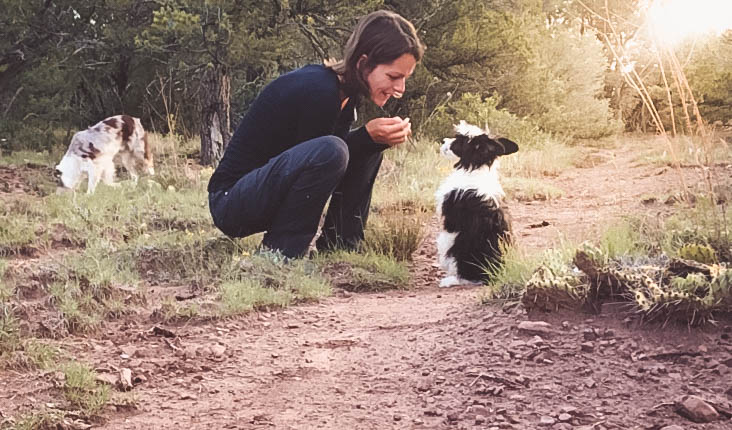
Where Should You Get A Puppy?
So you decided to have a puppy join your family, but from where? There are multiple options for adopting or buying puppies. Let’s look at some common ones:
Buying A Puppy From A Breeder
If you have a clear idea of what you want your puppy to look and be like, getting a dog from a responsible breeder is a good strategy.
There are 193 breeds currently registered with the AKC (American Kennel Club). The consistent breeding produces dogs who have a fairly predictable temperament and appearance. While every dog will be an individual and might stray a little from the breed standard, it gives you a pretty good idea of what you can expect your dog to grow up like.
If you purchase a puppy from a breeder, you absolutely want to make sure that his parents have passed breed-specific health testing. Every dog breed has certain diseases that it is prone to, and many of these are (at least in part) genetic. Responsible breeders should scan the parents of each litter for these typical diseases and only breed them if they are clear. This way the offspring are as healthy as possible.
When researching a breeder, do not be afraid to ask him questions about the way the puppies are raised. If you are for example looking for a dog to join your family with small kids, you might want to pick a breeder who raises his puppies in the house (versus a kennel environment) so they are already used to the noises of a household and being around people.
Ask your breeder what kind of puppy raising program he implements. Puppy Culture is a popular and proven program that exposes the puppies to a variety of sensations, sights, sounds and smells to make sure they are well-adjusted to everything they might encounter later in life.
Many breeders have the puppies meet other people and kids before they leave for their new home, start them out in crate training and take them on car rides. The more your breeder invests into puppy raising, the easier your puppy will be to handle!
Breeders might sell puppies on a spay/neuter contract. Make sure that you are on the same page regarding the age at which the puppy should be altered. During the surgery, you can also bank stem cells. Check out Gallant that provides stem cell banking to set your dog up for a happy and healthy life.
Adopting A Puppy From A Rescue
There are many homeless dogs in our country and adopting a puppy from a rescue is a wonderful way to help with this problem as well as get a friend for life.
If you adopt a puppy from a rescue he will be thoroughly vetted (that means he received vaccinations, was dewormed and examined for any kind of disease he might have), microchipped and potentially already neutered or spayed.
Rescues can give you an idea of roughly how tall the puppy will get as well as his predicted temperament as based on the appearance and/or the breed of the parents.
If you have very specific ideas of how you would like your new dog to be (both temperament and appearance-wise), adopting a rescued puppy might not be the best idea as it is often impossible to determine what breeds are in his ancestry.
(I am saying this with the experience of having trained with many families and their rescue dogs that turned out to be a bit different than expected. Some had a much higher prey drive than anticipated, some grew much bigger than the owner expected, some turned out to have much more energy than the rescue had thought.)
If however you are looking for a looking for an absolutely unique and loyal companion whose life you saved, then there are many rescues to choose a puppy from!
Buying A Puppy From A Neighbor/Craigslist
While dog breeding is a somewhat regulated activity (technically kennel and breeding licenses are required for having litters), these regulations are impossible to enforce. This results in a lot of litters being bred by owners that are not registered breeders. While the offspring of your co-worker’s Chihuahua and his neighbor’s Toy Poodle might be cute, it is best to leave breeding to the breeders that have planned litters with genetic testing and parents well matched in their temperament.
Most “hobby breeders” also are not very well-versed in puppy raising, socialization and might not take the litter to the vet as needed.
There is no heartbreak such as buying a puppy from a questionable situation, finding out he is very sick, investing your whole heart as well as thousands of dollars into saving the pup only to lose him at the end.
It is best to stay away from these kind of litters. You can find many adorable one-of-a-kind crosses in rescue groups that have been thoroughly vetted and will be healthy and ready for a life with you.
Buying A Puppy In A Pet Store
Like buying a puppy off of Craigslist or your neighborhood bulletin board, buying a puppy in a pet store should be avoided. Many dogs and cats in pet stores are sick and are the result of very questionable breeding practices. They are often mass-produced in so-called “Puppy Mills” that focus solely on the quantity of dogs sold.
Do not support these by buying from pet stores, and look for a responsible breeder or rescue organization instead.
Now that you have decided where you will get your puppy from, it is time to get your house ready!
Preparing Your Home For The Puppy
It’s set, a puppy will be joining your family! Now it’s time to prepare the house for your puppy.
You don't need too many things for your puppy - buy the essentials now and add on more later as you get to know him and his toy and chewing preferences.

Collar, Tag And Leash
Your puppy will need a collar and a leash for being taken on walks, to the vet, to go socializing etc. I highly recommend to get him an engraved tag with your address and phone number in case he should ever get away from you.
A 6ft leash is a good choice for regular walks. You can use a long line (20-30ft) for going to the park and practicing recalls. Do not use a flexi leash. It is near impossible for your dog to learn not to pull on leash when using a flexi leash, as the principle of a flexi leash is that it gives the dog extra freedom and radius for exploring if he pulls. This is the exact opposite of what you want to teach a dog while learning how to walk well on leash. Ideally, he should know that in order to walk, he needs to not pull.
You can also use a harness instead of a collar for walking. Do not purchase a no-pull harness, as these restrict the dog’s shoulder motion by pulling tight when he walks. We do not want our puppy to shorten his stride or adopt an unnatural walking pattern. The more freedom for the shoulders a harness allows while walking the better.
Important: Do not put your puppy into his crate with his collar on, especially if it has tags attached to it. It can get stuck in the walls of the crate and choke your dog. There is no need for him to wear a collar while he is in his crate.
Puppy Food
For starters, find out what your puppy has been eating at the breeder’s house or the rescue he came from and purchase that food. You can later switch to a different brand. Moving in with you however is already a big change that might upset the puppy’s stomach, so we do not want to add even more stress right away by adding a new food.
After the first few days you can gradually transition to another food if you’d like. Do it gradually, such as
- Day 1: 80% old food, 20% new food
- Day 2: 75% old food 25% new food
- Day 3: 60% old food, 40% new food
- Day 4: 40% old food, 60% new food
- Day 5: 20% old food, 80% new food,
- Day 6: 100% new food
Beds And Crate
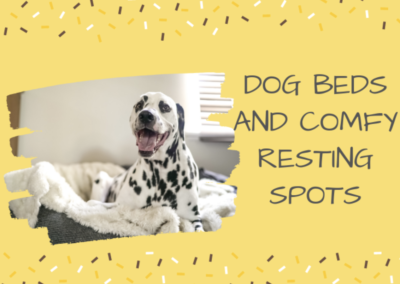
If you are planning on crate training your puppy, get a crate that is large enough for his adult size. Your puppy will grow a lot from the time you pick him up to when he is fully grown. You can adjust the crate’s size by putting in a divider to make it smaller in the beginning.
For naps during the day and transitioning from the crate he will need one or more comfortable beds. Puppies love beds with raised edges. The enjoy sleeping while touching something with the back and head. It must remind them of snuggling with their litter mates.
If at all possible, try to get a towel, blanket, t-shirt or similar from the home the puppy was raised in to put into his bed. The familiar scent will calm the puppy down and help him go to sleep. Young puppies are like little kids in that they do not know when they are tired and should take a nap, sometimes even fighting it. This is where having a snuggly piece that will make your puppy sleepy comes in very handy – it will make staying put and getting some rest easier for your puppy.
The First Weeks At Home
Finally the big day is here and you get to bring your puppy home! You have everything ready for him and are excited to show him his new house.
Some puppies take everything in a stride and proudly explore, running through the hallways and rooms and the yard with their tail straight up in the air (this shows confidence!). They might already play with you and greet every member of their new family enthusiastically.
Is your puppy not happy, but instead shy and confused? Don’t worry – he just went through the biggest change in his short life. Some puppies do not respond well to this and miss their mom, former home and most of all their litter-mates! Singleton litters (that means litters with only one puppy) are quite rare and your puppy has most likely grown up with constant companions. They snuggled together, wrestled together, chased each other and slept touching each other’s bodies.
Some puppies miss their litter-mates a lot during their first days in the new home!
Your puppy may appear restless or whine a lot. He might have troubles going to sleep and wake up multiple times during the night. Be sympathetic – to him it must be quite scary to all of a sudden wake up alone and not have his brothers and sisters to curl up with.
Under no circumstances want to discipline and scold him.
Now is the time to show him that you are his new best friend in life.
If he whines, pet him and talk softly to him. Play with him and feed him out of your hand as often as you can so he starts to associate good experiences with you. If he wakes up at night, take him out to potty and pet him to calm him down. Don’t make the mistake to discipline your puppy – we need him to know you are trustworthy and kind.
It can be hard to be excited about your new puppy and he seems to only be sad and shy. Don’t worry – if you are kind and friendly to him, he will soon decide that living with you is not so bad after all!
During your puppy’s first week you want to let him guide the activities you plan. If he is outgoing and happy, you can take him to a friend’s house, a training class or other adventures.
Does he seem introverted and shy? Then you want to make sure he comes out of his shell before taking him to many new places. If he is already unsure, being exposed to too may stimuli could confuse him even more and slow down his process of feeling at home.
Where Does The Puppy Spend His Day?
When your puppy is still young, you want to make sure that he only has the run of the house when he is supervised. While an adult dog usually can be trusted at home alone, do not trust your puppy.
This rule will protect both your house and him.
A young puppy should never have the run of the house unsupervised. It quickly could become dangerous for him and damaging for your home.
Puppies are destructive and will try out chewing on multiple items around your home. This can be furniture, rugs or doors. Your puppy might try out your plants, electrical cords or even cleaning products.
It is not safe for puppies to be alone in multiple rooms unsupervised.
Your puppy will try to eat things that you did not even consider edible, such as underwear or batteries.
(I once had a client whose dog was a very prolific chewer and had chewed and destroyed her sunglasses and iPhone.)
You want to have a contained area for your puppy when you can not actively supervise him.
(This will also make potty training him much easier – more about this in the next chapter.)
There are several set-up options that work well for this.
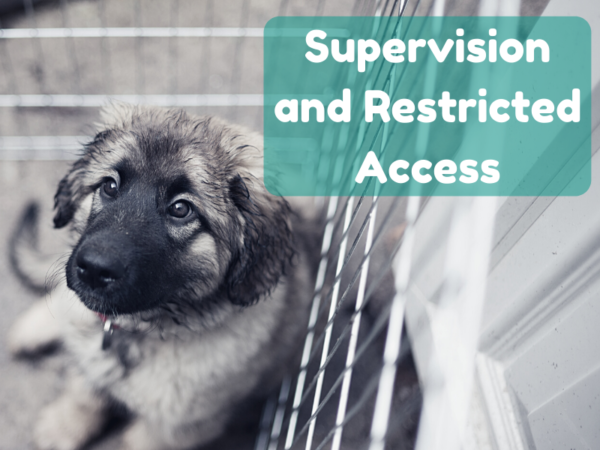
- X-pens
X-pens (or Exercise Pens) are movable metal structures, similar to a Pack-and-Play used for toddlers. They allow you to keep your puppy contained wherever you would like to.X-pens are useful to for example restrict a puppy’s access to only one part of your living room or bedroom. You can fill them with appropriate chew toys, a bed and a water bowl for your puppy.
They can also be used outside. An x-pen will come in handy during a party, while you are cleaning your car or if you want to take your puppy along to a picnic in the park.
- Baby Gates
If you have rooms with tile (such as your kitchen), you can use baby gates to restrict your puppy to this room. Accidents will be easier to clean up (and also less likely) and your puppy will not get into trouble while he is unsupervised. Baby gates are a more permanent solution than x-pens are they are usually harder to move around and need to be adjusted to the width of doorways in your home.They are however more stable than x-pens and often serve as a long-term solution for many dog owners.
- “Puppy Rooms”
If you have a room that is safe for your puppy to be in (such as a sunroom, bathroom, mud room etc.), you can also use this room as your puppy’s place to be when no one can actively watch him.Like the baby gates solution, this often turns into a long-term set-up that works very well for owners and dogs.
While you can watch your puppy and make sure he does not get into trouble, he can be anywhere you like him to be of course! You can have him with you while you relax, clean, work in the yard etc. Just make sure to keep an eye on him, because he can start mischief quicker than you think.
I recommend to teach your dog from a young age that evenings are calm family time. You can give him a frozen Kong to chew while you watch TV, read or play games.
Potty Training, Feeding And Walking
Potty Training
It seems like the one thing puppies do the most is – pee. A young puppy needs to go to the bathroom a lot. Puppy owners are often overwhelmed with the potty training and get frustrated about the many accidents the puppy has in the home.
It is crucial for potty training success that you follow the above advice on restricting your puppy’s access to the house when he is not supervised.
Here is how potty-training problems start:
Puppies are naturally very clean. Their mother keeps them clean while they are very young and later on they leave their whelping box to relieve themselves. Puppies distinguish between living/playing areas and potty areas. They do not want to soil the places where they eat, play and spend most of their time.
Every person – whether a breeder or a rescue volunteer – who is raising a litter of puppies is definitely not giving them the run of the house. They are restricted to a pretty small area, perhaps the kitchen, patio or similar. It is easy for the puppies to avoid accidents in their living area and only potty in the designated spot (such as a box with wood shavings) as it is clear to them which area is which.
Now the puppy comes to live with you. All of a sudden he has a huge house all to himself! He sees some parts of it as living/playing/eating/sleeping areas, and others (often the parts where we spend less time, such as a corner in a hallway) as the potty areas. Your house is so big for your puppy that is is beyond his comprehension that there is no potty spot in there.
Here is where it becomes very important that you either supervise your puppy or put him into an enclosed space such as an x-pen. If his surrounding is small enough he will make an effort to not potty there. When you come to get him you can take him outside to his designated potty spot and teach him to pee there.
Let’s say you want to do some laundry. You put your puppy into the kitchen with baby gates. You fold the laundry and after a half hour you come back to your puppy. He needs to go potty by now and held it in because he did not want to soil his kitchen play area, what a good boy!
You take him outside to the place you want him to pee at, he pees and you can praise him and give him a treat. That was a fantastic learning experience for him.
If you had left him out unsupervised he might have just retreated into a corner of the house and gone there (in the belief that this is an acceptable potty spot).
While your puppy is supervised and has the run of the house, keep in mind that he has to potty:
- after every meal
- after waking up
- after playing
- and every 20 minutes regardless of the above
You can learn to tell when he is about to go. Most dogs sniff the ground and circle before pottying. If you see your puppy doing this, quickly pick him up and carry him to the potty area outside he should use.
In the beginning, he might not understand that his potty place outside is just for pottying and not also for playing with leaves, tugging on the leash, digging etc. I recommend to stand still and not start to play or walk before your dog has relieved himself. Over time this will be quicker and quicker and the place itself will become a cue for your dog to go.
Expect to take your puppy out during the night for the first couple weeks. There are some miracle puppies who will sleep through the night without needing to pee from the beginning – congratulations if you scored a pup like this! If not, you will have to get up at least once during the night for potty-training for a while. But don’t worry, it will get better and he will soon sleep all night long.
Feeding Your Puppy
There are many options for feeding your puppy. You can feed him dry food (kibble), wet/canned food or raw food. Kibble is the easiest and most convenient solution for most puppy owners, so we will focus on that for now.
I recommend to feed your puppy 3-4 times a day. (Keep in mind that he will have to be taken out after every meal!)
I do not encourage free-feeding, a practice at which the dog has free access to the filled food bowl all day. It can make potty-training exponentially harder as you never know when your dog eats.
Free-feeding also does not allow you to plan for training sessions. Ideally you do not want to try and train a puppy with treats when he has just eaten and couldn’t care less about the food in your hand. In order for treats to be enticing they need to be desired by a dog that has at least a bit of an appetite:
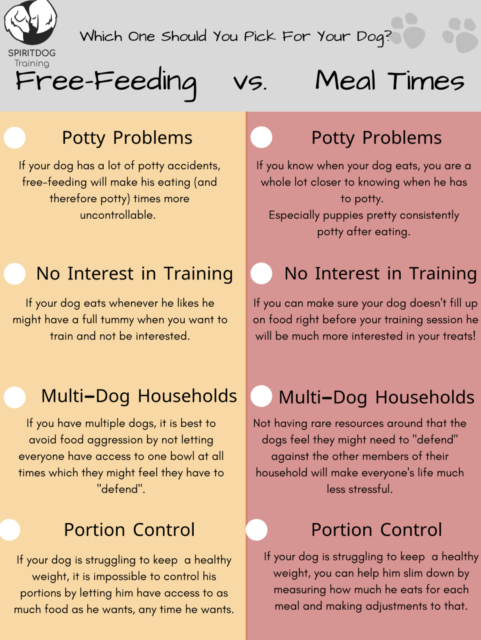
Creative Feeding Ideas
As often as possible you should different feeding ideas for your puppy. He can eat out of a bowl if you are busy of course, but if not – feed him from hand, by doing tricks or through food puzzles!
Every piece of food your puppy eats is an opportunity to exercise his mind and body and teach him new skills.
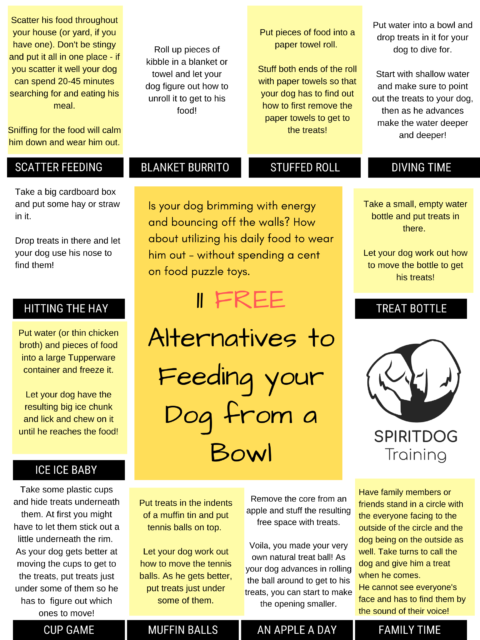
Taking Your Puppy On Walks
Ideally you want to start taking your puppy on walks as soon as he moves in with you. These walks are short in the beginning and should only happen where it is safe for your puppy. You want to make sure that the areas where you walk him are not frequented by many other dogs before he has had all his shots (definitely no dog park visits or trips to places with free-roaming dogs).
Walks are a relaxing and calm activity. You want to communicate that to your puppy from the beginning. Do not take him for a walk when he is brimming with energy and tugging on the leash. Instead, play with him at home first and go for a walk when he is already calming down a bit. That way you can set yourself up for success in training loose-leash walking.
Your puppy’s body is still growing and you do not want to expose it to repetitive, high impact exercise such as jogging. Do not run with your small puppy on leash. Let him dictate the pace of the walk and go as slowly as he wants to.
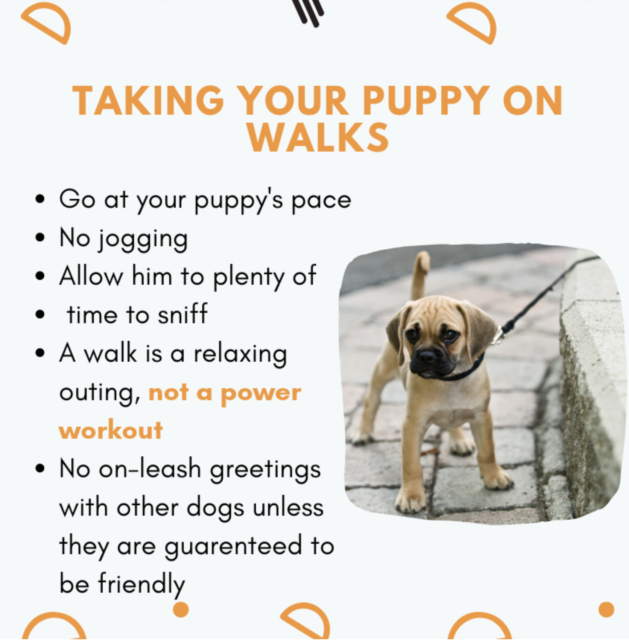
It is important that you let your puppy sniff a lot during the walks. This will calm him down and let him feel confident. The better he knows what’s going on in his neighborhood (and dogs gain that knowledge through their sense of smell), the safer he will feel.
If you meet people during the walk that want to pet your puppy, let your puppy decide whether he wants to greet them or not. For some puppies having strangers bend over them and pet their head is threatening and scary and they do not like it the least. If you see your puppy trying to hide behind your legs, just tell the others that today is not the day to pet your puppy.
If however your puppy would like to greet the others, you should advise them to only pet him when all four feet are on the floor. A 10lbs puppy who jumps at at stranger’s legs might be cute, but a 65lbs adult dog who has learned to do the same won’t be cute anymore! It is best to establish the habit of not jumping from the beginning.
I do not recommend to let your puppy great other dogs that you meet on your walks while he is on leash. Unless you know for sure that the other dog will be trustworthy and friendly (such as the 14 year old dog next door – older dogs are usually better at this), it can lead to confrontations that are best avoided.
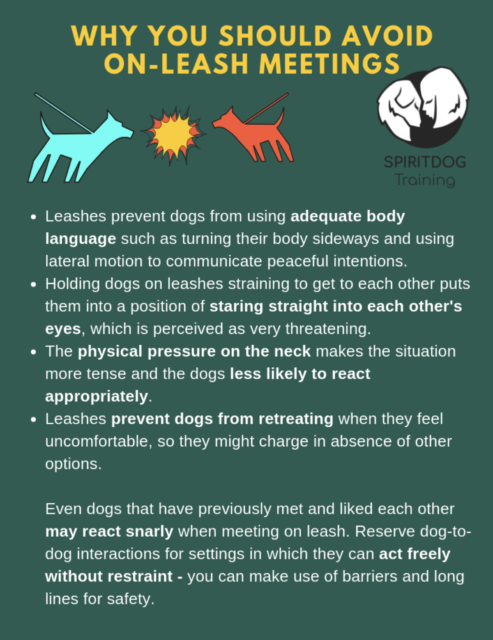
Training Your Puppy
When Should Puppy Training Start?
You can start to train your puppy in obedience and manners as soon as he moves in with you. The earlier he experiences consistent rules the better he will learn what to do and adapt to them.
A big mistake is to have a puppy move in at 8 weeks old and then wait until he is 4 months or older until you start training. Sure, a 2 month old puppy is so small and cute that it is not really necessary that he knows how to sit, stay, go to his bed or not pull on leash; but you will need these skills later and it is best to establish them early on.
The longer your puppy rehearses bad habits such as pulling on leash or dashing out the door the harder it will be to break them.
Every time he does a certain behavior, a pathway is formed in his brain that makes it more likely that he will repeat the behavior in the future. You only want this to happen with good behaviors such as sitting politely or not stealing treats out of your hand. Rehearsing and getting used to bad behaviors should be avoided through training.
What Should The Puppy Be Trained To Do First?
I like to train every puppy to do a “default sit”. This means that whenever the puppy wants to have a treat you got, wants to have your attention or interact with a stranger, he will sit. This is a much better option than jumping up, barking or even biting and tugging on a sleeve or shoe!
Sitting is a natural behavior for dogs that they often assume when they are not quite sure what to do. This makes it very easy to train your dog to sit. Take some treats in your hand and stand in front of your puppy without saying anything. He might jump up at first – just ignore it. Sooner or later your puppy will sit for you. This is the moment at which you can tell him Yes! and give him a cookie. (Treats and praise will make him a happy participant in the training.)
Pay attention to your puppy throughout the day. Does he perhaps sit at your feet when you are reading a book? Will he sit when you get out his leash to go for a walk? Does he sit when he is waiting for his dinner? These are all moments in which you can praise and reward him for his sit. Over time this practice will train him to assume a polite sitting position in many situations – and be a very well-behaved dog!
Training Your Puppy To Be Calm
Puppies enjoy running, romping and being crazy. If you do not want the adult version of your dog to be obnoxious inside your house, you should not let your puppy practice these behaviors either.
We often see puppies getting the “zoomies”. In that state they are running around aimlessly, jumping up on couches, going over tables and knocking into people. Zoomies are a normal puppy behavior and a completely healthy expression of joy. Your living room with the glass table however might not be the place for your puppy to show you that joy!
It is important that you do not allow any behaviors you dislike from the beginning. If you don’t want your dog to race around inside your house, do not let him do it. If he starts “going crazy”, pick him up and carry him to a place outside where he can safely zoom around (your garage might work as well!). Show him where it is acceptable to zoom.
(Do not allow him to race where there are slippery floors! Dogs, especially puppies, do not understand that they should not go fast on these surfaces. They will slip and hurt themselves. Many dogs have torn their ACLs by racing on tile or hardwood floors.)
On the other hand, you want to train your puppy to be calm and relaxed in your living area. Running and tumbling around might damage furniture or be dangerous for your puppy. I have had more than one client tell me their dog slid into a glass cabinet, shattered it and suffered multiple cuts on his head and chest.
Make sure that your puppy has had some activity before training him to hang out calmly with you. You can take him to the park, play with him or teach him some tricks. Then you give him something to chew and sit down with him.
If he tries to keep on being wild, it can work very well to attach a leash to the puppy and tether him either to you and your chair. This way he will not go anywhere. He might throw a little tantrum at first but then settle. Do this every time your puppy is wound up – it will teach him that slow down and relax. For many dogs the leash actually eventually becomes a signal to calm down!
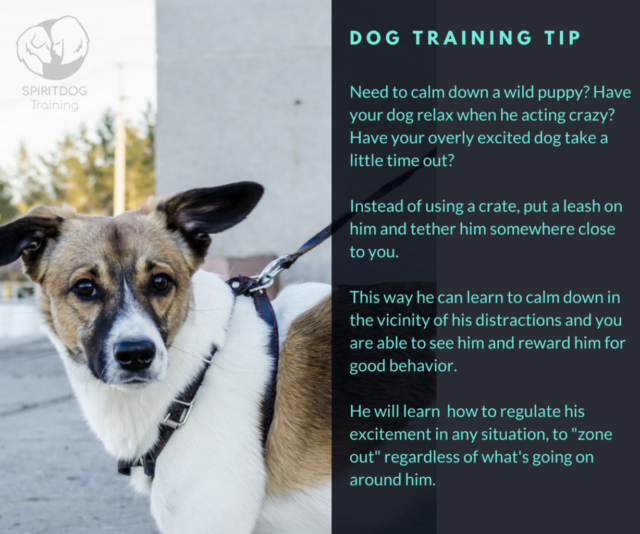
Playing With Your Puppy
Dogs are one of the few species that enjoy to play throughout their lives. And they definitely love to play as puppies! You want to establish good playing habits now so that your dog will be fun to play with when he is bigger and stronger.
Playing Tug-Of-War With Your Puppy
Tug-Of-War is a great way to play with your puppy. It is a myth that tugging will make your dog more aggressive or rowdy. As long as you have some rules in place (you decide when you play, you decide when you end, you are consistent that “out” means “out”), it is a great game that dogs enjoy very much.
You want to pick soft toys for tugging. The knotted rope toys found in pet stores are not ideal, especially for puppies that are teething and do not want to grab anything that is hard and painful in their mouth.
What works much better are soft, floppy toys without stuffing or even just a cut-up old T-shirt.
I often see owners tug with their dogs with the toy high up in their air, bouncing the dog up and down though.
You want to tug with your dog’s four feet on the floor with not a lot of jerking motions – these are all absorbed by your puppy’s neck and back! Watch this video for more information and to see how calmly tugging can be done.
(Also notice the type of toy I am using for tugging:)
Playing Fetch With Your Puppy
Fetch is another game many dogs enjoy. You want to make sure that you do not overdo it – 5-10 minutes are plenty. Do never play fetch on slippery or hard surfaces such as tiles or concrete. Soft grass, sand or a thick rug are best for fetching.
If your puppy does not yet show interest in balls, here is how you can awaken the ball hunter inside him:
Training Your Puppy To Not Chew
Puppies love to chew on anything and everything. Couches, chairs, tables, socks, human feet and hands, doors, cables … I have seen some bold puppies even attempt to chew on the family cat!
It is important to understand that chewing is a natural desire of your dog that is impossible to extinguish. Every dog has an inborn wish to chew. For puppies this is usually very strong and gets weaker as they age. Many dogs however chew up until old age. If we do not offer them appropriate chew materials, they will find something for themselves instead!
Dogs most like to chew on items with a “natural” taste. That means items that are derived from animals or animal products, such as:
- Beef hooves
- Bully stick
- Yak milk chews
- Deer Antlers
Keep many of these around for your dog to chew on when he feels like it. The more options he has to pick from, the less likely he is to pick your furniture.
The rope toys, Nylabones, stuffed toys and tennis balls you can find in the pet store are not appropriate chew items for your dog. He should not ingest them. Reserve these toys for playing together with you. Do under no circumstances leave your dog alone with stuffed toys that he might chew, de-stuff and eat. This can lead to a blockage that requires emergency surgery which will be expensive and dangerous for your puppy.
Stuffed and frozen Kongs are a fantastic way to offer your dog novel and delicious chew options. Here you can find many recipes.
If you struggle with your puppy chewing on you, check out the Ultimate Guide To Stopping Puppy Biting.
Your Puppy And Other Dogs/Pets/People
Training Your Puppy To Be Around Other Pets

Do you have other pets besides your puppy? Perhaps an older dog, or cats, chickens, guinea pigs?
One very important rule is:
A puppy’s behavior is unpredictable.
That means that you should always be there to supervise his interactions with your other animals. Any kind of trust that a puppy will surely be good is misplaced. The only thing you can be certain about is that your puppy is a curious, energetic baby who can and will annoy your other pets at times.
Let’s look at dog-dog interactions first.
Training Your Puppy To Be Respectful Around Your Other Dog(s)
It is very important that you are your older dog’s advocate. Do never expect your older dog to discipline the puppy or “show him the ropes”. Many dogs will allow a puppy to push their patience and tolerance very far. Puppies will try tirelessly to make other dogs play with them or attempt to steal bones or toys from them.
While your older dog may not actively go after the puppy he will be annoyed and not form a positive relationship with him. It is absolutely crucial that you watch the interactions between your two (or more) dogs and step in when you see that the puppy gets too wild. A wound-up puppy will often ignore the warning growls and raised lips of an older dog.
We do not want the older dog to believe that he needs to bite the puppy to stop him from being obnoxious.
Make sure that they never have conflicts over any kind of resources. This includes chew items, toys, food, sitting next to you etc.
Give them plenty of fun time together with you. You should take them on walks together, go on adventures, take them to the park etc. When you are training the puppy, give the older dog treats as well every now and then so he does not feel jealous.
The best way to add a puppy to a dog that is already part of your family is by being proactive and diligent in making sure they only have positive experiences with each other.
Your Puppy And Non-Canine Pets
If you have pets that are not dogs, such as cats, reptiles, hamsters, chicken, rats, parrots etc., you need to be aware that your puppy has a prey drive.
In very young puppies we do not often see that prey drive. The dog in the picture above was about 3 months old when he met the rat. At this point he had not yet shown any kind of interest in motion or chasing things. He did not chase and fetch balls, run after other dogs etc. He also showed no prey drive when he met the rat.
However he is over a year old now and definitely developed a prey drive and big interest in racing after moving things.
Puppies can give you a false sense of security when they are young and you have them around other animals. Many puppies do great with chickens with little to no training initially. Once they grow up however and develop a prey drive, the might go after the chickens unexpected and from one day to the other. You do not want to come home to the results of a puppy whose predator instincts suddenly kicked in.
Do not leave your puppy alone with other pets unsupervised. The risk is too high.
Socializing Your Puppy
Ideally you want to expose your dog to many different people, places and dogs as he grows up.
Here is one big word of advice though:
Do not let him view you only as his driver.
When socializing dogs, we often find ourselves trying to make all public outings and encounters with others highly pleasant for our puppies. The puppy learns very quickly that everyone will have a friendly word and a pet (and perhaps even a cookie!) for him.
Over time, he becomes more and more drawn to everyone but you. He loves to explore and sniff at all the parks you take him to, but he does not care so much for you. It is very important that you make sure that he likes you even more than any place or other person he meets!
When you take him out to socialize make sure that he always finds some reinforcement through you. This could be in the form of earning treats by sitting and lying down. It could mean playing a little round of frisbee at the park. It could also mean playing a fun game of chasing a toy on a string or playing tug-of-war.
Socialization is about exposing your puppy. It is not about teaching your puppy that everything is more fun than you!
(The same applies for doggy day cares and the problems that can arise from them.)
This is it — you are all set for your puppy. Enjoy your time with him and do not stress too much about training. They are babies after all and it is normal if things get a little chaotic or wild.
It is all part of the journey – enjoy!

